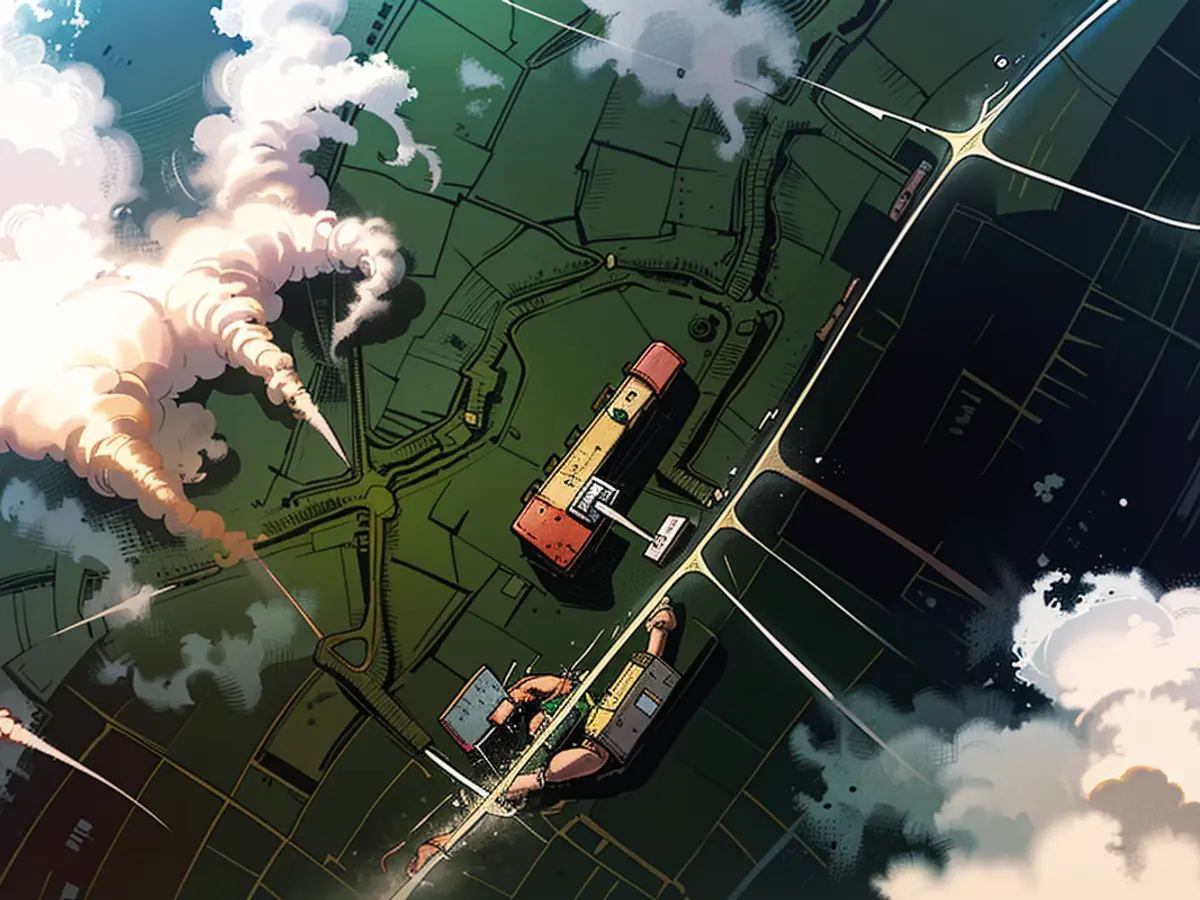Two EU countries threatened with Russian gas supply cut
Ukraine's advance into Russian border territory reportedly includes the capture of Sudzha. From there, Gazprom pumps Russian gas into EU countries. The capture of this town could lead to an abrupt halt in supplies. By the end of 2024 at the latest, EU countries will have to find alternatives anyway.
For Austria and Slovakia, it could get tricky: Due to Ukraine's invasion in the border region of Kursk, the Kremlin could decide to stop delivering Russian gas via the Transgas pipeline through Ukraine. This transit will stop latest by the beginning of next year anyway, as the government in Kyiv refuses to extend the contract with Moscow that ensures supplies through its territory.
In this, it receives backing from the EU Commission, among others. Officially, this contract expires on 31 December 2024. The pipeline previously supplied, among others, the Czech Republic, Hungary, Austria, and Slovakia with natural gas. Now, however, only Vienna and Bratislava are still dependent on it. The import of Russian pipeline gas into the EU is not sanctioned. Gazprom also supplies EU countries like Hungary and Greece via the TurkStream pipeline, which runs from the southern Russian coast through the Black Sea into the European part of Turkey.
Whether Austria and Slovakia can still rely on Moscow's gas supplies in the coming months depends on the battles of Ukrainian troops in the Russian border region. In their advance in Kursk, Kyiv's troops are said to have also captured Sudzha, a town of 5,000 inhabitants in southwestern Russia.
Half of Russian pipeline imports to EU via Sudzha
Through Sudzha, the state-owned company Gazprom pumps its gas through Ukraine into EU member states. The town is said to have fallen into Ukrainian hands, according to some social networks, including the Telegram channel Rybar, operated by Russian military bloggers. Videos circulating on the internet are also said to show Ukrainian military forces in Sudzha.
On Monday, Gazprom still reported that gas was being pumped through the hub. In 2023, around 14.65 billion cubic meters of gas were supplied via Sudzha, corresponding to about half of Russia's pipeline gas exports to Europe or about five percent of EU consumption. However, the situation in Sudzha could change soon.
"It is possible that Russian President Vladimir Putin will instruct Gazprom to stop deliveries via Sudzha to the EU if the town is permanently held by the Ukrainians," says Szymon Kardas, energy expert at the Warsaw office of the European Council on Foreign Relations (ECFR), in an interview with ntv.de. Although an abrupt end to deliveries would be hardly beneficial for Russia economically, Putin has often reacted more emotionally than rationally in the past when it comes to economic decisions, Kardas emphasizes. Moreover, he could use the situation politically to put pressure on Slovakia and Austria.
Austria could be supplied by Germany or Italy
In May of this year, Austria still obtained 90 percent of its gas imports through the Transgas pipeline. The Slowakia imported half of its natural gas imports via this route last year. Both countries are already working on becoming independent of Russian imports. They are supported in this by representatives of the European Union, who also want to ensure Ukraine's gas supply after the supply stop.
"The EU has been preparing for months for the gas transit agreement to end in late 2024. And Energy Commissioner Kadri Simson has repeatedly stressed: We are ready to live without this Russian gas," Birgit Schmeitzner, spokesperson for the EU Commission, told ntv.de on request. Europe is capable of covering its gas demand for the coming winter and spring - even without imports from Russia via the Transgas pipeline.
According to media reports, there have been discussions about filling the pipeline through Ukraine with gas from Azerbaijan. However, there is no such plan on the table at the moment. Instead, Austria and Slovakia are also looking for individual solutions to ensure their energy supply. Austria could be supplied by Germany or Italy, while Slovakia could rely on Poland, says Kardaś. Price increases would then be possible in both countries. However, the Austrian Climate Protection Ministry is calm about the situation. Any price increases in Austria would only be temporary and would not lead to disruptions in the European wholesale market.
Czech Republic was once supplied via the Transgas pipeline, but now completely dispenses with it, as current data shows. From these data, Kardaś also reads how Hungary has substituted its gas supplies through Ukraine: Gazprom now increasingly supplies the country via the Turkstream pipeline. Only one line of Turkstream is used directly for the Turkish market, the other also supplies EU countries. According to Kardaś, the supply volume through Turkstream has significantly increased: Last year, from the end of January to the end of July, only 6.5 billion cubic meters of gas flowed through the pipeline into the EU, but this year in the same period already 8.3 billion cubic meters of gas. The additional gas is supplied, among others, to Hungary, says Kardaś.
The EU Commission supports both Austria and Slovakia in their efforts to become independent of Russian gas imports, as the contract for gas transit through Ukraine will expire at the end of 2024. In the event of an abrupt halt in Russian gas supplies via Sudzha, Austria could potentially be supplied by Germany or Italy, while Slovakia could rely on Poland.








